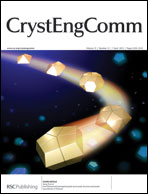White-light emission and weak antiferromagnetism from cubic rare-earth oxide Eu2O3 electrospun nanostructures
Abstract
The authors report the synthesis of cubic europium oxide (C-Eu2O3) nanobelts (NBs) via an electrospinning method with a subsequent one-step


 Please wait while we load your content...
Please wait while we load your content...